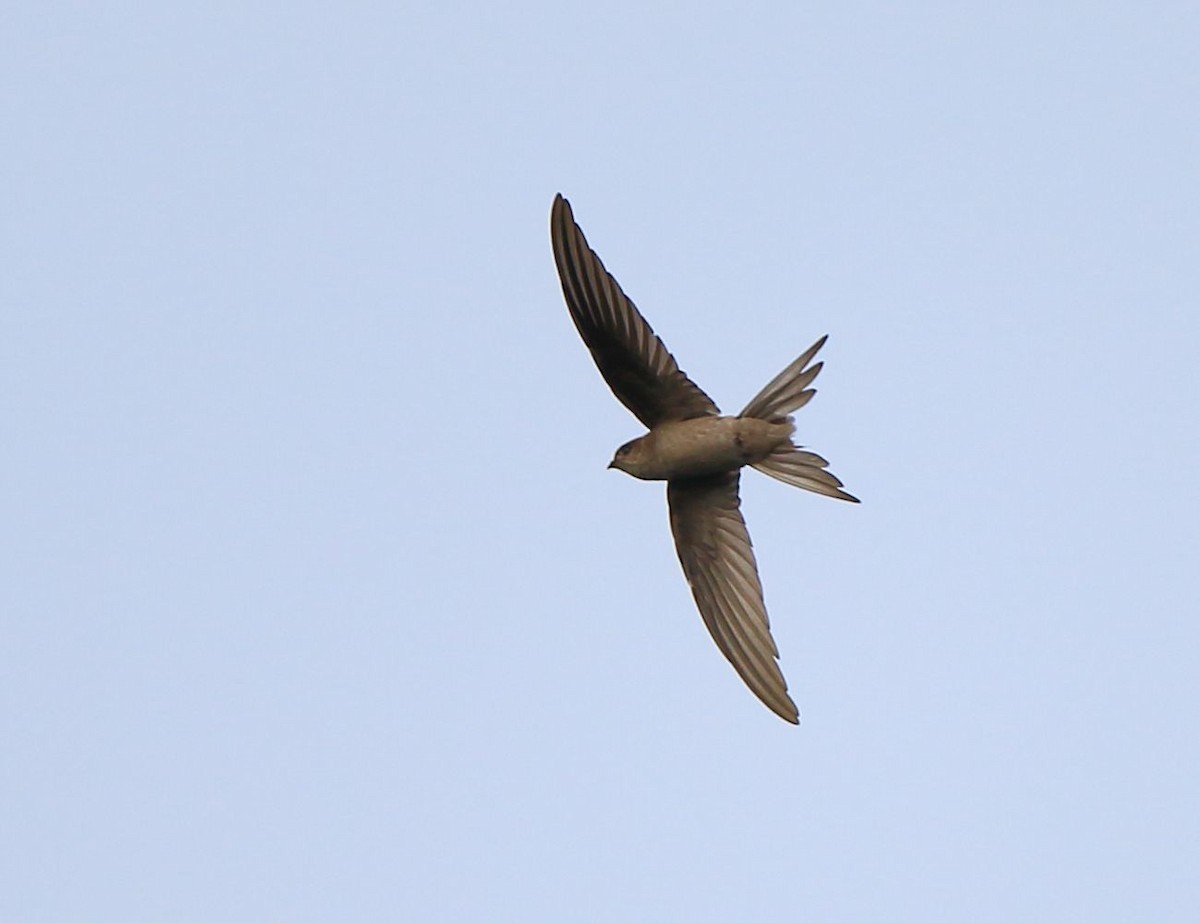Asian Palm Swift
A species of Old World Palm-swifts Scientific name : Cypsiurus balasiensis Genus : Old World Palm-swifts
Asian Palm Swift, A species of Old World Palm-swifts
Botanical name: Cypsiurus balasiensis
Genus: Old World Palm-swifts
Content
Description General Info
 Photo By Arnab Pal
Photo By Arnab Pal Description
The Asian palm swift (Cypsiurus balasiensis) is a small swift. It is very similar to the African palm swift, Cypsiurus parvus, and was formerly considered to be the same species. It is a common resident breeder in tropical Asia from India to the Philippines. The down and feather nest is glued to the underside of a palm leaf with saliva, which is also used to secure the usually two or three eggs. This is a bird of open country and cultivation, which is strongly associated with oil palms. This 13 cm long species is mainly pale brown in colour. It has long swept-back wings that resemble a crescent or a boomerang. The body is slender, and the tail is long and deeply forked, although it is usually held closed. The call is a loud shrill scream. Sexes are similar, and young birds differ from adults mainly in their shorter tails. Asian palm swift has very short legs which it uses only for clinging to vertical surfaces, since swifts never settle voluntarily on the ground. These swifts spend most of their lives in the air, living on the insects they catch in their beaks. Asian palm swifts often feed near the ground, and they drink on the wing. 
Size
13 cm
Nest Placement
Tree
Feeding Habits
Asian Palm Swift predominantly consumes flying insects, such as ants, termites, and various beetles. These birds often feed in mixed flocks at an average height of 13.3 meters, particularly active in the evening. Unique adaptations include gregarious foraging in large groups, sometimes up to 1000 individuals, and a preference for alate rice earhead bugs during early morning in South India.
Habitat
The habitat of asian Palm Swift typically encompasses areas abundant in fan palms, where they nest and roost. They are prevalent in lowland regions, often foraging in adjacent locales such as over mangroves and paddy fields. Asian Palm Swift adapts to both natural and human-altered environments, including city parks, and uses clearings and edges of dense forests. They are least common in thick forest interiors but are also found in scrub and dry deciduous forest habitats.
Dite type
Insectivorous
General Info
Feeding Habits
Bird food type

 Photo By Arnab Pal
Photo By Arnab Pal Scientific Classification
Phylum
Chordates Class
Birds Order
Swifts and hummingbirds Family
Swifts Genus
Old World Palm-swifts Species
Asian Palm Swift